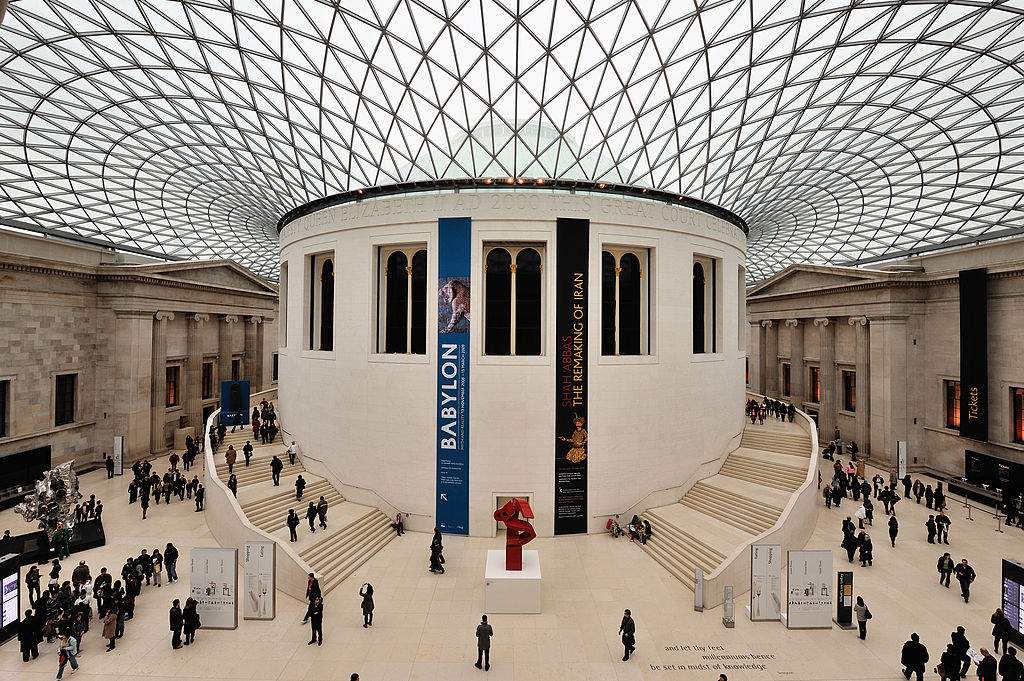Felwine Sarr and Bénédicte Savoy are the authors of a now-infamous report on African cultural heritage preserved in French museums ( Finestre Sull’Arte covered it in the first issue of our quarterly print publication): Sarr (Senegalese, an economist) and Savoy (French, an art historian) in their report insist on the moral duty former colonizing countries have to former colonies, stressing that returns of spoliated works to their countries of origin, where possible, are necessary. However, there are some museums that would turn a deaf ear to requests for restitution.
In particular, Sarr and Savoy pointed the finger at the British Museum. The famous London museum, the two scholars said in an interview with the Guardian without mincing words, behaves “like an ostrich that hides its head in the sand.” “In France,” the two scholars explained, "there is an expression, la politique de l’autruche (the politics of the ostrich) that is used to indicate when you are faced with a problem but you don’t want to see it.“ The British, however, ”will have to respond and cannot continue to hide very long about these problems."
And indeed, the British Museum’s holdings include a great many objects taken from the countries that were colonies of the British Empire. An international stir has been caused by the case of the moaï from Easter Island that the inhabitants of Rapa Nui, even sending a delegation to London, have asked for back: the islanders are insisting and the negotiations are proceeding very slowly because the British wants to hold out on letting the stone giant go. But that’s not all: there are also, for example, the Benin bronzes taken from their country of origin during a punitive expedition in 1897. For these, the British has proposed a loan to African museums, which Sarr and Savoy judge insufficient. “It is not enough,” they say, “because the right of ownership always belongs to the lender. But if you return an asset there is instead a transfer of ownership rights.” And of course, Savoy says, the issue also takes on symbolic implications: “If you can lend objects, you get respect in the museum world, because you are the one imposing your conditions. According to capitalist logic, having the ability to lend gives you power and means you can impose your rights.”
The British, for its part, has made it known that “transparency about the provenance of objects is always welcome,” as a museum spokesperson told the Guardian, adding that in any case the institution agrees with the assumption of creating “new and more equitable relations between Europe and Africa.” However, the museum spokesperson goes on to specify, “we believe that the strength of the collection is its breadth and scope, enabling millions of visitors an understanding of the world’s cultures and the ways in which they are interconnected (through trade, migration, conquest or peaceful exchange).”
Meanwhile, on the impetus of Savoy and Sarr’s report, collaboration between France and African countries continues (as is well known and as we had also discussed on these pages, several former colonies came forward to request their works, starting with Senegal and the Ivory Coast, later followed closely by other countries). The report has certainly not been without criticism (there are, for example, those who thought it was excessive), but for its drafters it is nonetheless the case to “speak openly about restitution,” because doing so means talking about “justice, rebalancing, recognition and reparations.” Most importantly, for Felwine and Sarr, it is also a way to initiate new cultural relations.
Pictured: the entrance to the British Museum. Ph. Credit Eric Pouhier
 |
| Accusations to British Museum: on returns of works spoliated from countries of origin, burying head in sand |
Warning: the translation into English of the original Italian article was created using automatic tools. We undertake to review all articles, but we do not guarantee the total absence of inaccuracies in the translation due to the program. You can find the original by clicking on the ITA button. If you find any mistake,please contact us.